Test Political Messaging with Facebook Ads
Learn what issues and messaging works best for your voters.
Facebook – The World’s Largest and Fastest Focus Group
Facebook is a perfect place to capture attention and use data to find your voters. That is not the extent of its powers. Facebook is also the world’s largest and fastest focus group.
For political campaigns, it is important to know what issues matter most with voters and how to best talk about those issues. Facebook will help you learn exactly what to focus on for specific audiences.
This post is a part of a series on using Facebook for political campaigns. If you want to see all of the posts, just start here.
Creating a Political Issue and Message Test on Facebook
On Facebook, we have the option to create a campaign – why you’re running your campaign. Under the campaign, we have the option to create multiple ad sets – who will see your campaign. Under the ad sets, we have ads – what you’re going to say to your audience.
When testing a message on Facebook ads, we want to test at the who and the what levels. First, we want to know who cares about issue a, b and/or c. We’ll call it issue testing. Then, when we know what issue a specific audience cares about. We’ll call it message testing. That’s when we test what language works best to engage them on that issue.
Issue Testing on Facebook
The first step is to find out what issues matter most to your voters.
Facebook gives you the ability to segment your audience based on interests and behavior. This might help you skip this step by creating an environmentally engaged audience, for example.
The problem is you might miss people. Often on Facebook we are guilty of stereotyping or assuming certain characteristics match with certain preferences. For example, we might only show our ads to liberals or people who care about the environment. While this interest-based targeting is definitely helpful, it does risk over segmenting, meaning you are leaving out specific voters.
“On Facebook we stereotype, assuming certain characteristics match with certain preferences. Let voters self-select what they're interested in before you decide for them.”
A great way to see what the majority of voters in your district care about is by letting them self-segment. Create a geographic audience of your ward/district/state/etc. This geographic targeting post will help. Once you have your geography set, let actual voters tell you what matters.
Create a carousel ad showing four or five issues to voters in your district. Just choose Carousel on the ad stage of your campaign.
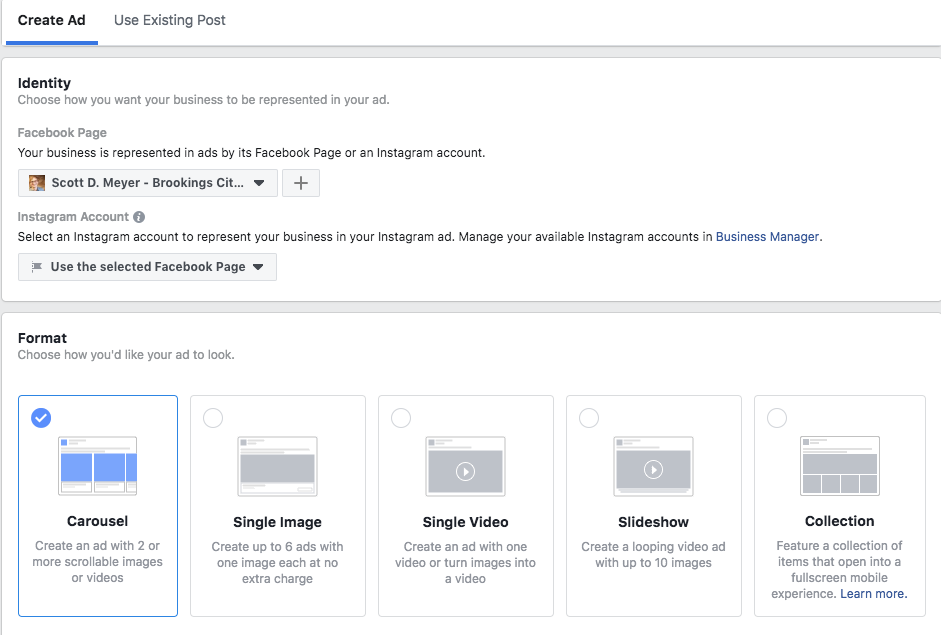
Each “card” in your carousel can highlight a different topic – environment, economy, healthcare, corruption. Then, your audience can click on the topic that interests them most. Facebook will even order them by popularity if you check the box (see red highlight below).
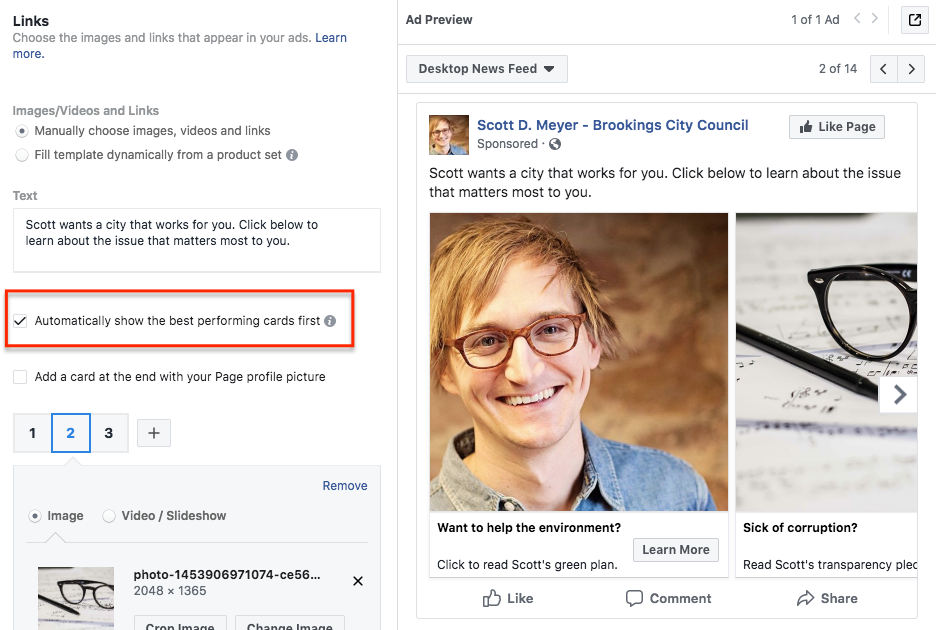
We want to learn from this ad, so just knowing which one is popular isn’t enough. We want to track and segment the people who value healthcare, as an example, and compare that to the number of people in our district interested in the environment.
Measure Carousel Success on Facebook
The quick way to measure your carousel success is directly on Facebook.
On your Ad Manager, you can change the reporting columns. First, change your “Columns” to Carousel Engagement.
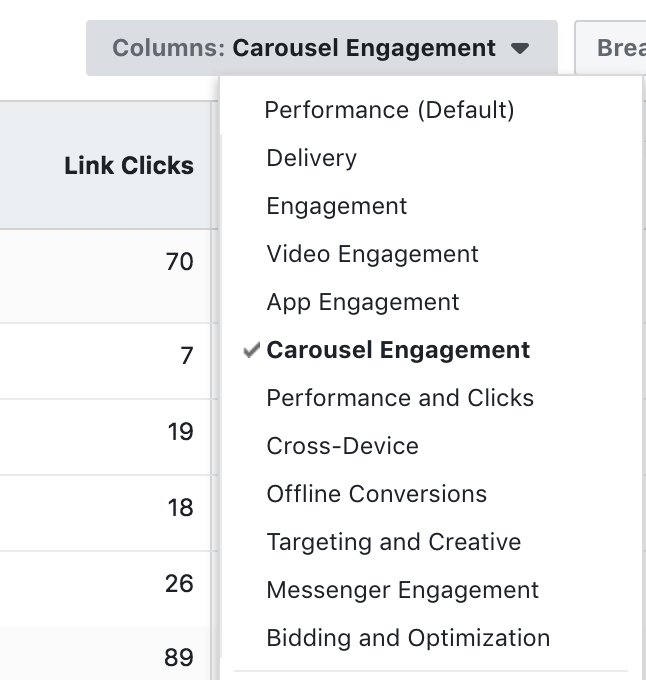
Next to the Columns drop down, you have the option to choose Breakdown>By Action>Carousel Card
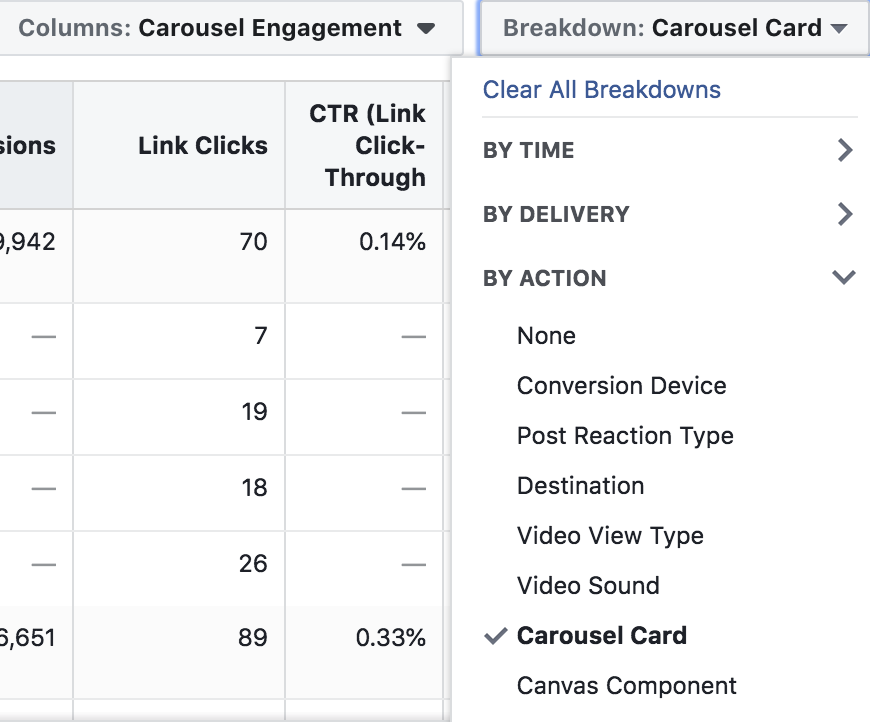
After you choose these two drop downs, the reporting will now show you the performance of each card so you can decide which one is performing best. Note that some metrics, such as impressions, may not display by Carousel Card. Traffic objectives, such as clicks, will show.
Measure Carousel Success on Google Analytics
You can also measure the success of your carousel ads on Google Analytics.
For each card, we want to add URL parameters. This means we will be able to see on our website analytics how many visitors come from a specific card. We can even see what visitors who click the environment card do on our website. Maybe we learn they donate more, spend more time on our site or are more likely to claim a yard sign. We can then use this information to inform how we campaign on traditional media or at debates.
To add URL parameters, click Build a URL Parameter.

Facebook will then walk you through the process. You will want to label each step they offer. Remember that if you name all of the cards with the same campaign name, you can then group that traffic on Google Analytics to see the total result. In general, start with the overarching campaign information at the top and get down to the specific card at the bottom. This example might help:
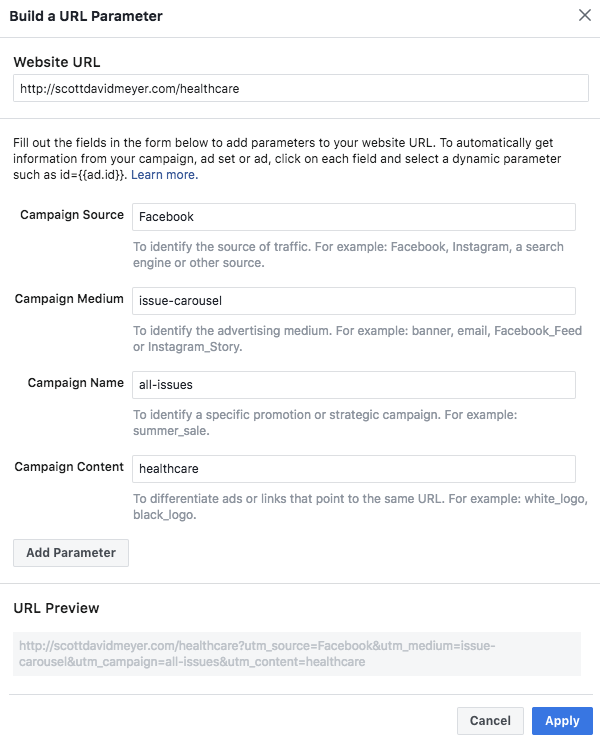
Now, you can see that URL preview. We will be able to track people who come to our website from that URL, as well as show ads specifically to people who click a specific card. This will help us test specific messaging to people who care most about healthcare, as an example.
Test Messaging on Engaged Audiences
Once we know what issue matters most to a voter, we can test different messaging to these same voters. This way, environmentally-minded voters see environmental ads, while healthcare voters see health care ads.
To test messaging, we will first go to the ad set level, to find who we should show our ads to.
At the top of the Audience box you have the option to create a custom audience. This is my favorite feature in Facebook! Your “first party data,” meaning data you exclusively have access to, will almost always be cheaper and more effective than Facebook’s data.
Get started by clicking Create New > Custom Audience.

There are many different ways to build a custom audience. We will use website traffic as our starting point. You could also target people who watched a specific video on your Facebook page or people who RSVP’ed to a specific event. The more targeted your video or event, the more likely that audience will be interested in that specific topic.
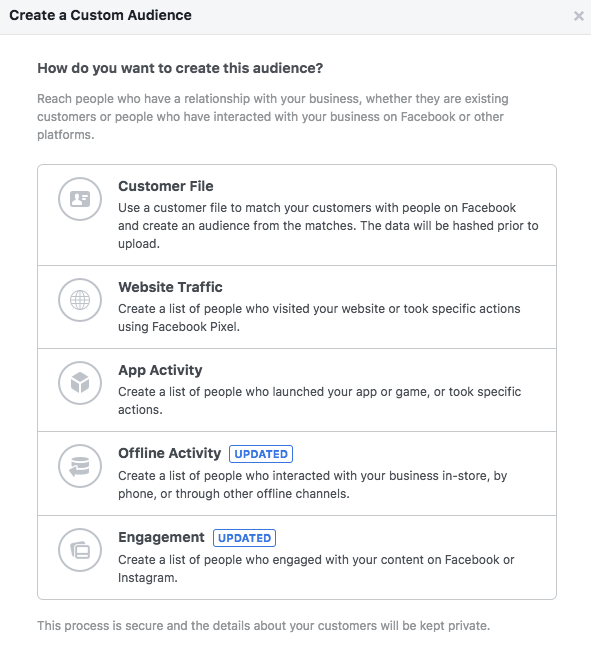
Once in the website traffic option, we can tell Facebook we want an audience of people who have visited a certain page on our website. Since our ads are appending our specific UTM parameters, we can use those parameters to only show an ad to people who clicked on our healthcare carousel card.
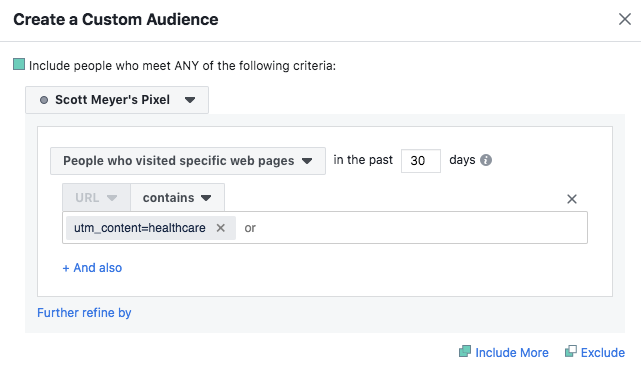
If I want to grow the audience, I could also include people who visit the healthcare page on my website. These would not necessarily be people who clicked my ad, but presumably they are interested in healthcare since they visited that page on my site.
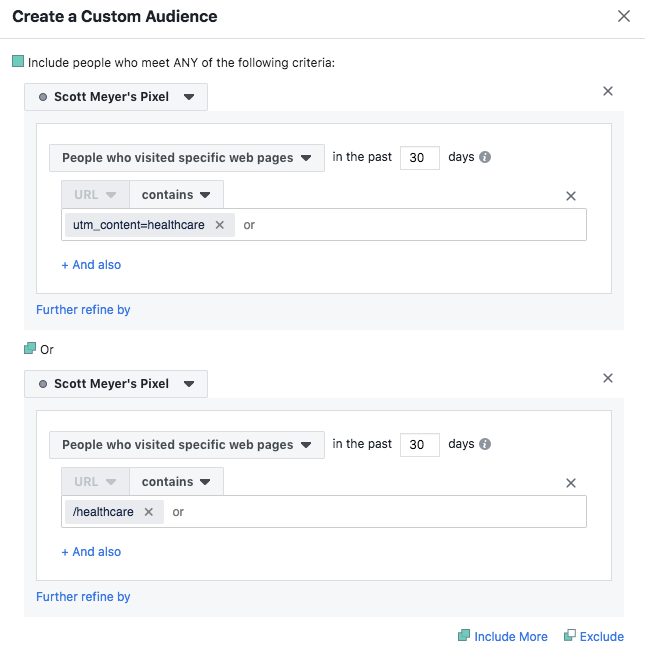
Once the custom audience is saved, I can still add the normal filters like geography to make sure I’m not spending on people who are not my voters.
Once we have the audience set, we will then create different ads about the same topic. Instead of carousel, I would recommend making a single image ad, but make multiple versions of it. Facebook will automatically show the different ads to your audience and will stop showing the versions that are less successful. In this scenario, you will have one campaign, one ad set (healthcare voters), and multiple ads to test different messages. Look at which ads get the most clicks and comments to learn how to best talk about the most important issues for your voters.
Dynamic Creative on Facebook
You can also let Facebook do the work for you with Dynamic Creative.
Make sure to switch to Quick Creation, then build your campaign. On the Ad Set level, you will see an option to choose Dynamic Creative.
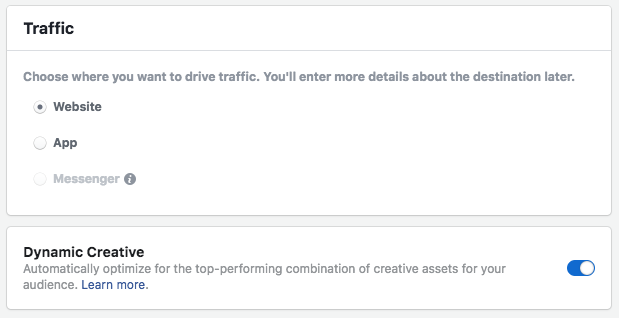
By switching Dynamic Creative on, you can then upload multiple images, type in multiple headlines and try multiple calls to action. Facebook will mix and match your assets to find what works best.
You’ll notice the ad creation process looks slightly different since you can now upload variations.
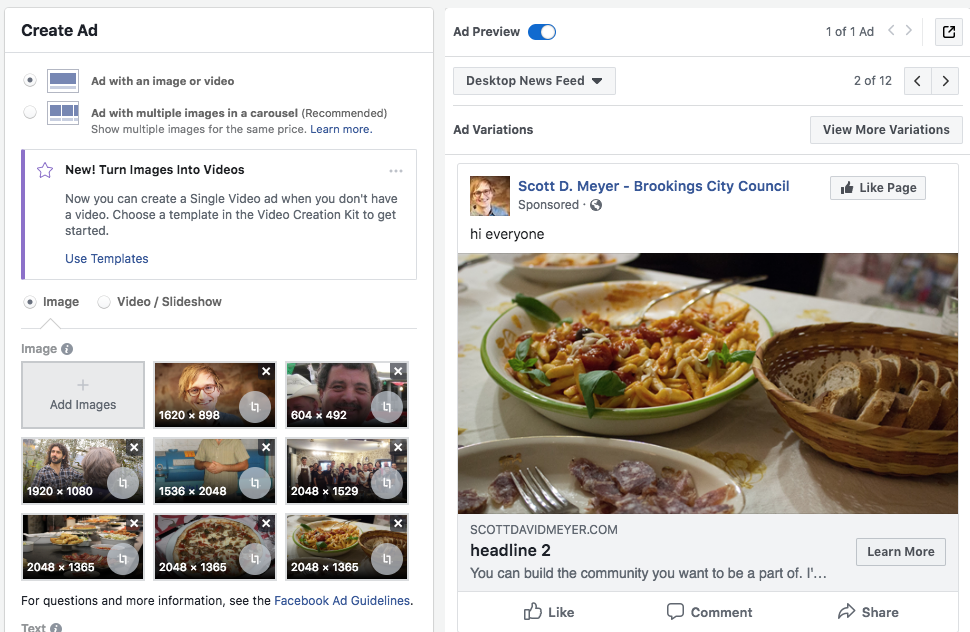
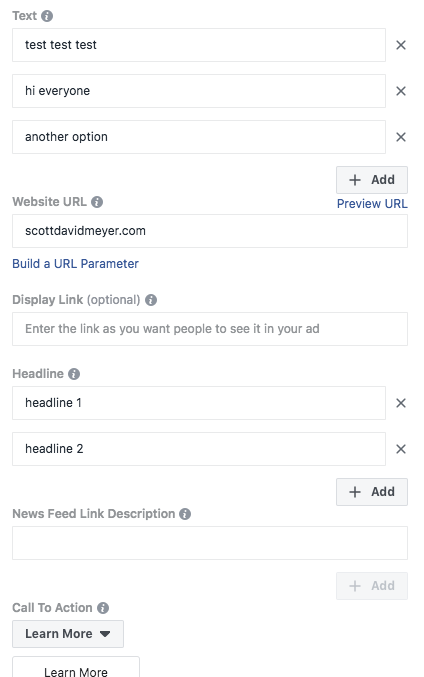
Make sure to keep the timeframe of the campaign short, otherwise Facebook will drag on the testing and not fully spend your budget. Run these multiple variations to easily find out the best images, headlines and calls to action for your campaign.
Use Facebook to Inform Your Campaign
Facebook gives you instant reach to voters while allowing you to watch how they respond to different issues and messages. Take what you learn from your Facebook campaigns and apply it elsewhere on the campaign. Edit your website text based on what works best on Facebook. Change your post cards and traditional media assets based on your data. Talk about the issues that voters are most interested in based on your Facebook tests.
Facebook truly is a 24/7 focus group. You can get as specific or broad as you like with your tests and can quickly learn more about your voters, whether you are running for school board or senate.

